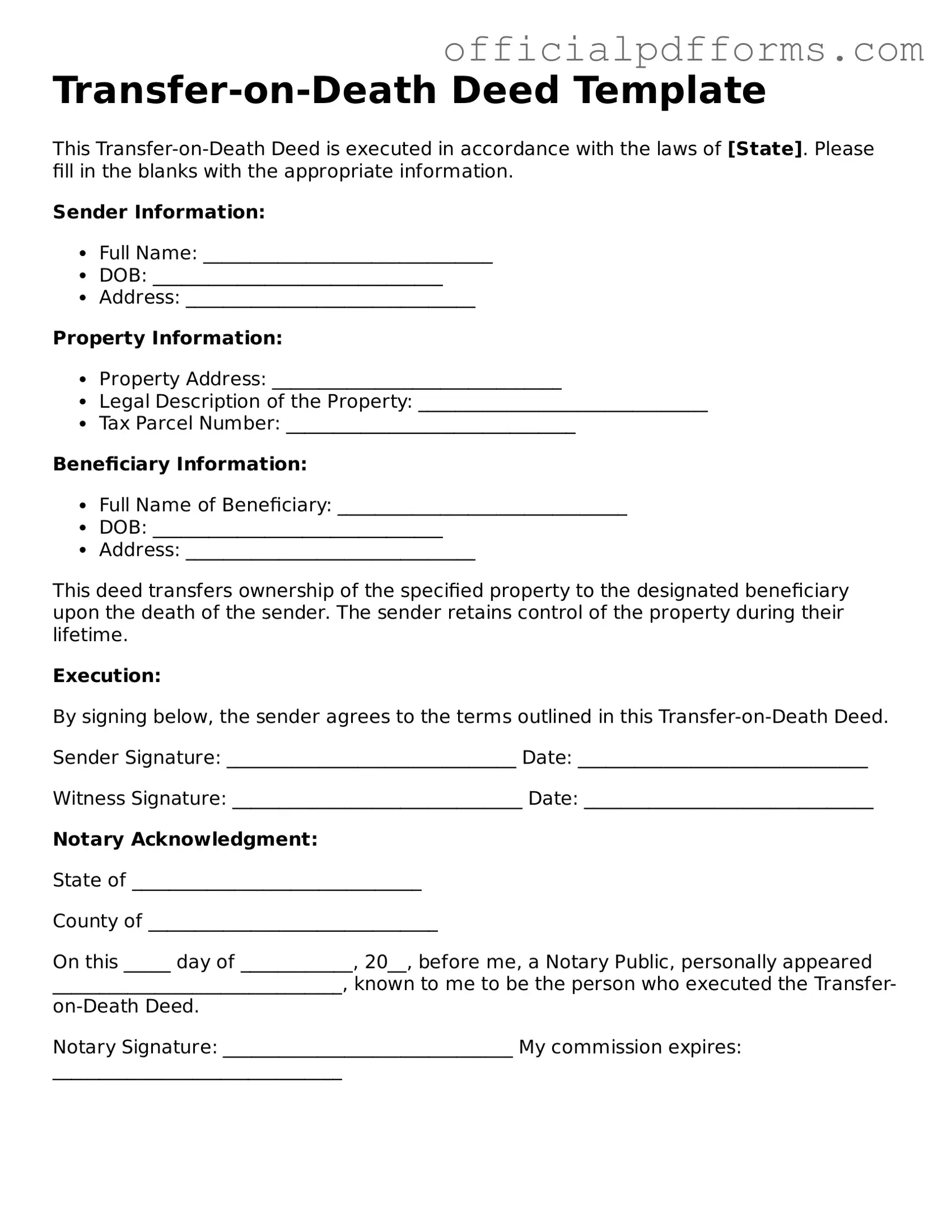What is a Transfer-on-Death Deed?
A Transfer-on-Death Deed (TOD deed) is a legal document that allows an individual to transfer real estate to a beneficiary upon their death. This type of deed bypasses the probate process, making the transfer of property more straightforward and efficient.
Who can use a Transfer-on-Death Deed?
Any individual who owns real property can use a Transfer-on-Death Deed. This includes homeowners, landowners, and property investors. However, the laws governing TOD deeds may vary by state, so it is essential to check local regulations.
How do I create a Transfer-on-Death Deed?
To create a TOD deed, follow these general steps:
-
Obtain the appropriate form for your state.
-
Fill out the form, including your name, property details, and the beneficiary's information.
-
Sign the deed in the presence of a notary public.
-
Record the signed deed with the county recorder's office where the property is located.
What are the benefits of using a Transfer-on-Death Deed?
There are several advantages to using a Transfer-on-Death Deed:
-
Bypasses probate, saving time and costs.
-
Allows for easy transfer of property to heirs.
-
Retains control of the property during the owner's lifetime.
-
Can be revoked or changed at any time before death.
Can I change or revoke a Transfer-on-Death Deed?
Yes, a Transfer-on-Death Deed can be revoked or changed at any time before the death of the property owner. To do this, a new deed must be created, or the original deed must be formally revoked and recorded with the county recorder's office.
Are there any limitations to a Transfer-on-Death Deed?
Yes, there are some limitations to consider:
-
Not all states recognize Transfer-on-Death Deeds.
-
Only real property can be transferred using a TOD deed; personal property cannot.
-
Beneficiaries must survive the owner for the transfer to take effect.
What happens if the beneficiary dies before the property owner?
If the beneficiary named in the Transfer-on-Death Deed dies before the property owner, the property will not transfer to that beneficiary. Instead, the property will become part of the owner's estate and will be distributed according to the owner's will or state intestacy laws.
Is a Transfer-on-Death Deed taxable?
The property transferred via a Transfer-on-Death Deed may be subject to estate taxes, depending on the total value of the estate. However, since the transfer occurs after the owner's death, the beneficiary typically does not incur income tax at the time of transfer. It is advisable to consult a tax professional for specific guidance.
Can a Transfer-on-Death Deed be used for multiple beneficiaries?
Yes, a Transfer-on-Death Deed can designate multiple beneficiaries. The property will be divided among the beneficiaries according to the terms specified in the deed. If no specific percentages are mentioned, the property will be divided equally among them.
